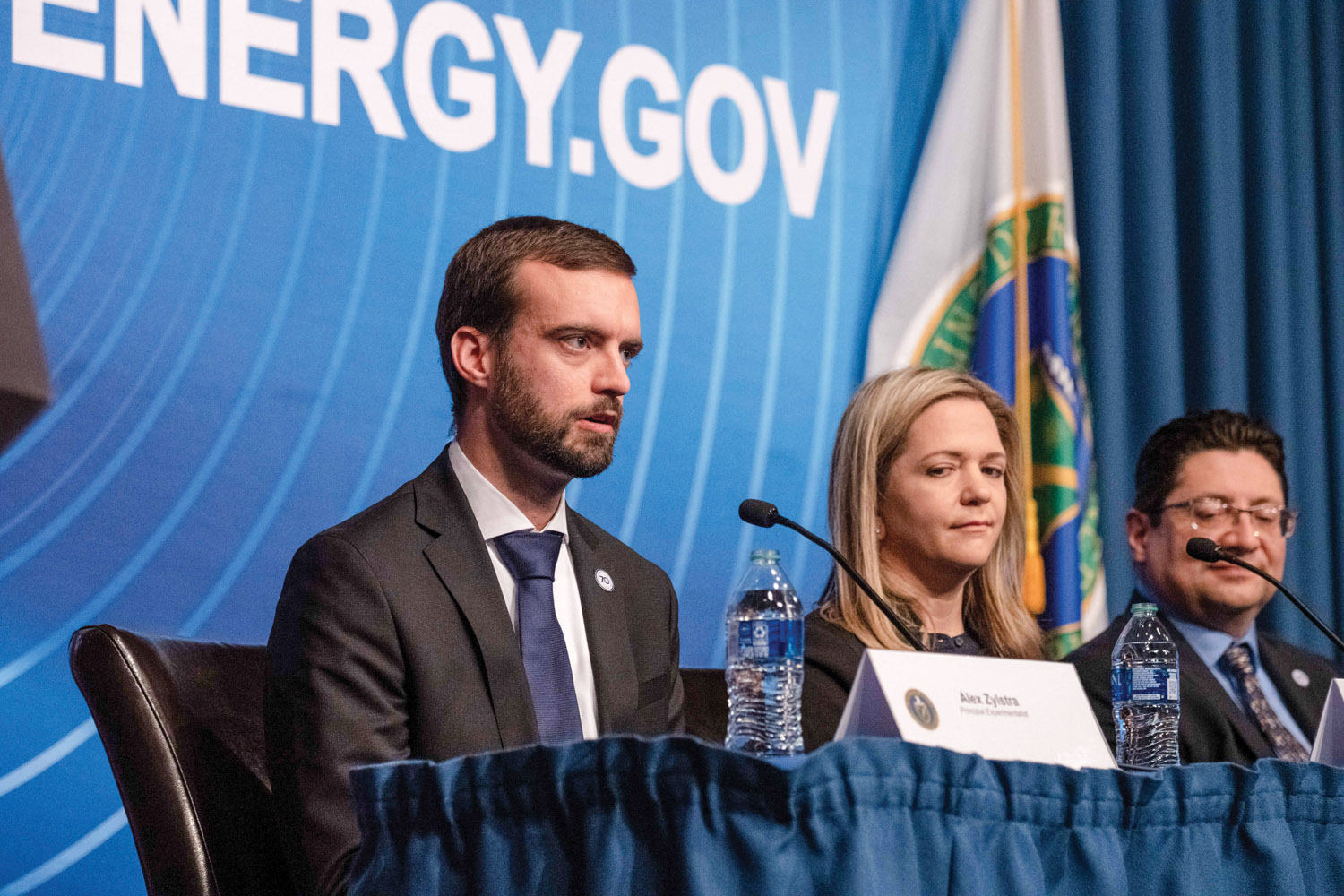The shot that took just a few billionths of a second was 60 years in the making, and Alex Zylstra ’09 played a key role in its success. Just after 1 a.m. on December 5, 2022, Zylstra and fellow scientists at Lawrence Livermore National Laboratory’s National Ignition Facility (NIF) at last achieved fusion ignition. The energy produced by a controlled fusion reaction exceeded the amount required to fuel the process: 2.05 megajoules in, 3.15 megajoules out. For a tiny fraction of a second, they produced the brightest thing on Earth.
Fusion, as the U.S. Department of Energy (DOE) describes it, occurs when “two light nuclei combine to form a single heavier nucleus, releasing a large amount of energy.” The NIF scientists achieved a breakthrough that could someday lead to limitless clean energy to power the world, using the same reaction as the sun and stars.
Zylstra was on the panel of experts at the DOE news conference in Washington to describe the successful experiment, which involved shooting 192 huge lasers at a target the size of a pea. The resulting temperature reached more than 100 million degrees. The pressure was more than double that at the center of the sun. The level of precision the experiment required was mind-boggling.
“We had a debate over a laser setting equivalent to five trillionths of a meter,” Zylstra said at the news conference. “We had a discussion with the laser science team over timing discrepancies of 25 trillionths of a second.”
In an email, Zylstra writes that he had been “eager to work on validating the results before we went public.” Outside experts also provided peer review before the successful experiment was announced. Still, “When I saw the early data start coming in after 1 a.m. on December 5th, I was incredibly excited,” he writes.
 As principal experimentalist, Zylstra describes his role as twofold: “First, to be the primary scientist associated with executing a particular ‘shot,’ or experiment, and second, to guide a set of experiments to develop improvements or test hypotheses.” He describes the NIF as “a highly interdisciplinary endeavor,” and works closely with the other teams—computational, design, measurement, laser and target fabrication, and operations.
As principal experimentalist, Zylstra describes his role as twofold: “First, to be the primary scientist associated with executing a particular ‘shot,’ or experiment, and second, to guide a set of experiments to develop improvements or test hypotheses.” He describes the NIF as “a highly interdisciplinary endeavor,” and works closely with the other teams—computational, design, measurement, laser and target fabrication, and operations.
Dwight Whitaker, chair of the Department of Physics and Astronomy at Pomona, was not surprised at Zylstra’s role in the groundbreaking experiment. Zylstra was in his junior year when Whitaker joined the Pomona College faculty and began setting up his lab. “I was trying to set up some difficult experiments and I was ecstatic when he joined the lab, because he was extraordinary,” Whitaker recalls. “Alex and I worked a lot of hours together. I used to turn knobs with him in the lab, and now he’s running one of the most complicated experiments ever created.”
Zylstra has focused on fusion since starting a doctoral program at the Massachusetts Institute of Technology the fall after graduating from Pomona. As an undergraduate, he’d had the opportunity to see the NIF center being built and says that “it felt like a chance to work on something straight out of science fiction.”
Whitaker says fusion could “solve one of the biggest problems facing humanity right now—the climate crisis.” But fusion research, like most other areas of science, is a long and arduous process. Whitaker says that “probably the personality trait you need to have as a physicist is the ability to grind through very unrewarding times, because experimental physics is usually a lesson in failure. Ninety percent of the things we do don’t work,” he says. “But each time you fail, you learn. I think that’s what fusion has been—lots of incremental steps and failures.” And then, success.

